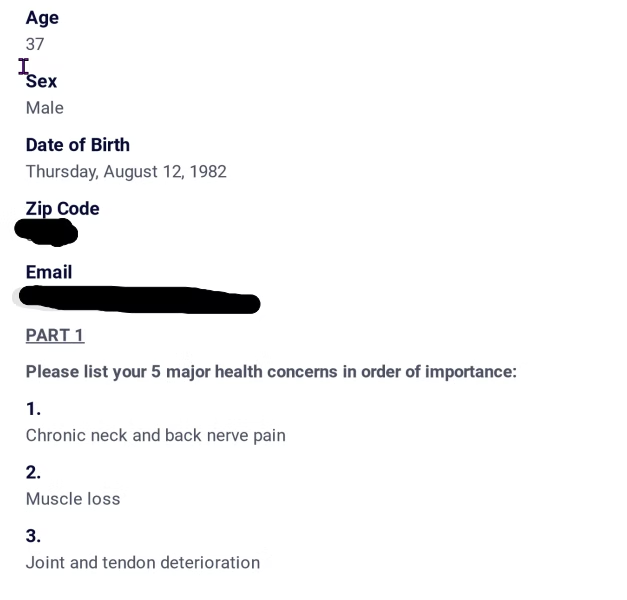Discover the astonishing effects of iron overload on your body and how it can lead to organ rusting. In this captivating case study, we delve into the story of one of my patients, a military veteran exposed to various materials and vaccinations, to shed light on the importance of monitoring your iron status.
The Patient and His Symptoms
Meet our patient, a 37-year-old military veteran who had encountered a multitude of substances, including anthrax shots and more. Upon seeking my guidance, he complained of several distressing symptoms, including:
- Chronic neck and back nerve pain
- Muscle loss
- Joint and tendon deterioration
Unveiling the Case Study
As part of my thorough approach, I conducted an extensive range of blood tests to uncover the underlying factors contributing to his health issues. The results revealed 19 markers slightly deviating from optimal levels (not entirely alarming, but certainly not ideal), 12 markers falling outside the standard range (requiring prompt attention), and 3 markers with alarmingly high values.
Notably, two out of the three markers with alarmingly high values were associated with iron, while the remaining iron-related markers were also elevated. Consequently, I diagnosed him with iron overload—an excess of iron in his body—a condition that had gone unnoticed by his previous healthcare providers.
For instance, his ferritin levels were recorded at a staggering 613. Typically, the desired range for ferritin is between 40 and 150. However, I prefer to see ferritin levels between 40 and 80 for optimal health. Furthermore, his elevated iron markers negatively impacted various systems within his body, including his liver, which was functioning poorly due to iron overload.
Imagine a bicycle made of steel or iron left out in the rain—over time, it begins to rust. Similarly, when your body contains an excess of iron, your organs essentially start rusting, gradually losing their functionality and shutting down.
This occurs because your cells become overwhelmed, hindering the mitochondria’s ability to generate energy effectively. As a result, you may experience chronic pain and other neurological symptoms, such as sleep difficulties.
In severe cases, healthcare professionals may prescribe regular blood draws every two to three weeks to reduce iron levels in the body. Fortunately, for most individuals, there are a few practical approaches to tackling high iron levels independently.
Option 1: Donate Blood
One effective method is to regularly donate blood. By doing so, you not only lower your iron levels but also assist those in need of blood transfusions. It’s a remarkable opportunity to improve your own well-being while saving lives—a true win-win situation!
Option 2: Adjust Your Diet
Another approach involves modifying your dietary habits. To reduce iron levels, it is advisable to limit your intake of iron-rich foods. Such foods include red meats, pork, seafood, dark leafy greens, beans, and iron-fortified cereals. Temporarily reducing your consumption of these foods will prompt your body to utilize the stored iron across its systems.
Conclusion
In summary, maintaining optimal iron levels is crucial for overall health and well-being. By monitoring your ferritin levels and taking appropriate action to address iron overload, you can safeguard your organs from rusting and ensure proper bodily function. Consider the simple yet powerful strategies outlined here to restore balance and vitality to your life.
Frequently Asked Questions (FAQ)
Symptoms can include chronic nerve pain (in the neck or back), muscle loss, joint and tendon deterioration, fatigue, and sleep difficulties, as the excess iron causes oxidative damage and "rusting" of the body's tissues.
While standard lab ranges may go up to 150 ng/mL, an optimal level is between 40-80 ng/mL. A level of 613, as seen in the case study, is dangerously high and indicates significant iron overload that requires intervention.
The most direct and effective method is to donate blood regularly. This physically removes iron from the body. Adjusting your diet to temporarily limit iron-rich foods like red meat and leafy greens can also help.










